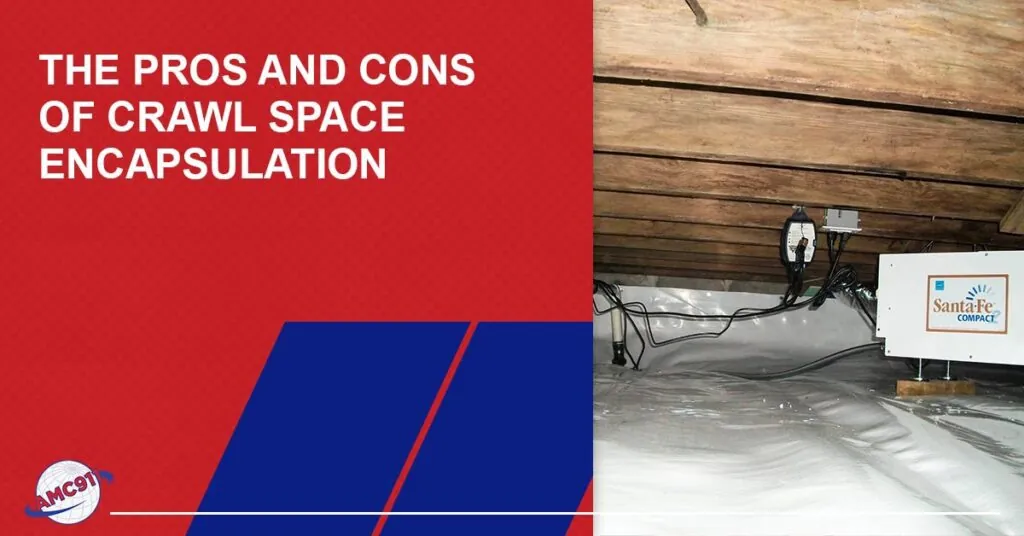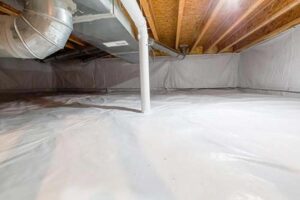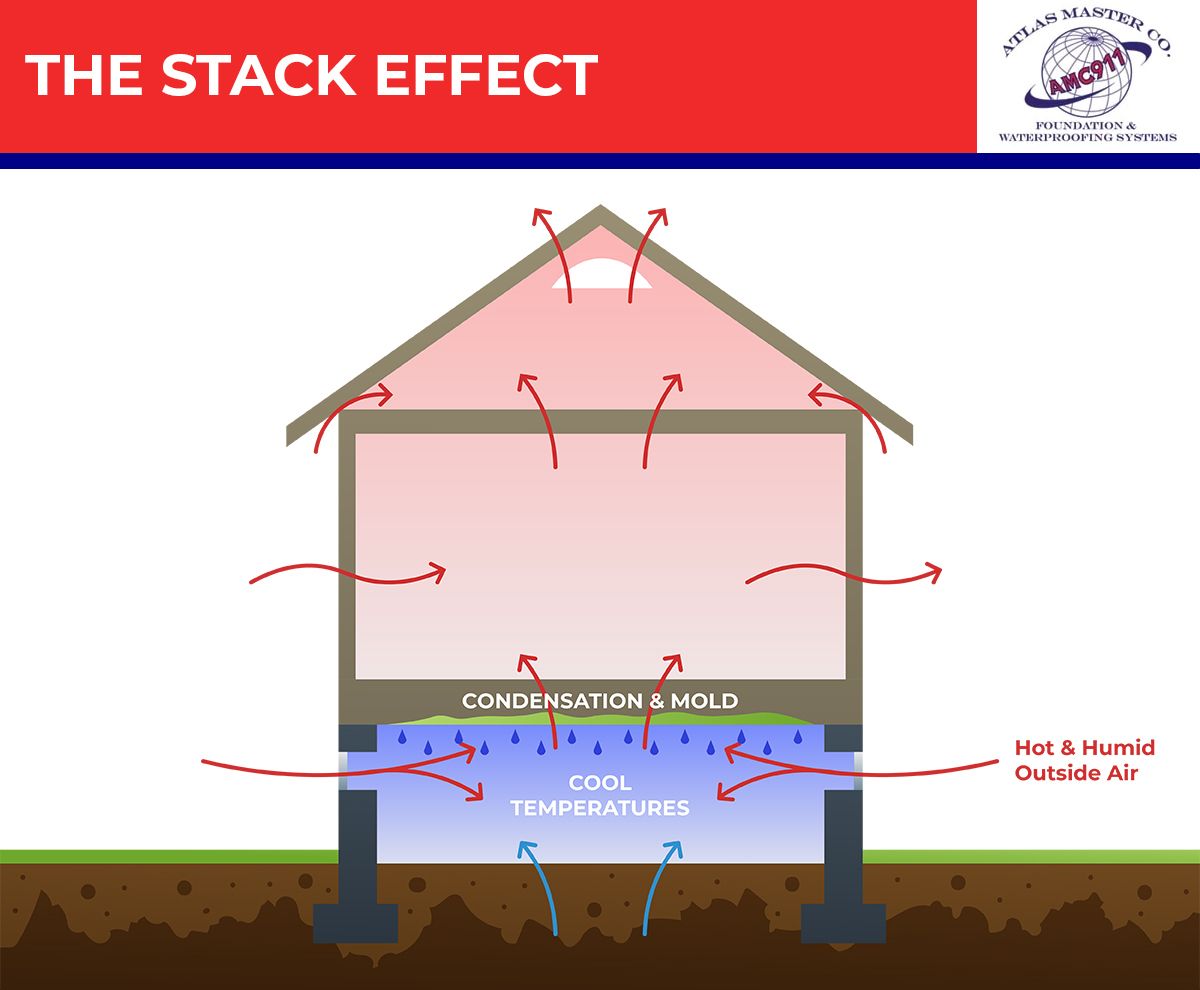Are you thinking about crawl space encapsulation for your home? Encapsulating a crawl space involves completely sealing off the area. It offers a number of benefits to help protect your home’s structural integrity, maintain comfort levels, and even potentially save on energy costs.
While there are certainly benefits to crawl space encapsulation, it’s important to first weigh the pros and cons. In this blog post, we’ll discuss the factors you should consider before making a final decision. Read on for an in-depth look at the pros and cons of crawl space encapsulation.
What is Crawl Space Encapsulation?
If you have a crawl space foundation, crawl space encapsulation is a process that involves sealing off the area beneath the house to protect it from moisture and other external factors. Encapsulation can significantly improve your overall indoor air quality and even possibly the energy efficiency of your home.
Encapsulating a crawl space creates a barrier that helps prevent the accumulation of mold, dust mites, wood-eating pests, and other harmful substances that can negatively impact your health and the structural integrity of your home.
Encapsulation also dramatically reduces the amount of moisture that seeps into the crawl space, moisture that can lead to a variety of structural problems. Overall, if you are looking for ways to improve the health and longevity of your home, crawl space encapsulation is a great option.
For more information, see Crawl Space Encapsulation.
Encapsulation Vs. Insulation
Crawl space encapsulation is not the same as crawl space insulation. While both have their unique benefits, it’s essential to understand the differences between them to choose the right solution for your needs.
Crawl space encapsulation involves covering the floor and walls of your crawl space with a thick vapor barrier to prevent moisture from entering the area.
Crawl space insulation involves adding insulation material to the walls and between the floor joists to prevent heat loss and avoid cold floors.
Crawl space encapsulation is about controlling humidity and insulating a crawl space is about controlling temperature.
Benefits of Crawl Space Encapsulation
Crawl space encapsulation offers numerous benefits for your home and your family. These include the following:
- Encapsulation can help protect the wooden structures in the crawl space from things like wood rot, which can cause structural damage, leading to expensive repairs.
- Because a percentage of air from the crawl space flows into your home’s living area via the stack effect (see infographic below), a clean, dry crawl space can improve the air quality in your home.
- Encapsulation can possibly increase energy efficiency by lowering the humidity inside your home. Drier air is less expensive to heat and cool.
- Pests, including termites, have a tough time entering an encapsulated crawl space.
- No musty smell inside your home because the crawl space won’t be full of mold.
- An encapsulated crawl space can be used to store things like tools and holiday decorations.
Cons of Crawl Space Encapsulation
The only real con to crawl space encapsulation is the upfront cost. Crawl space encapsulation can be a significant investment. However, many homeowners still find that crawl space encapsulation is a worthwhile investment in the long run because of the many benefits it provides.
Crawl Space Encapsulation Cost
The cost of encapsulating a crawl space varies depending on the size and condition of your home’s crawl space and your geographical region. If you choose to add a dehumidifier in the crawl space, that will be an additional cost. At the end of the day, only a foundation repair professional experienced with crawl space encapsulation can give you an accurate estimate.
Add A Drain Tile System, A Foundation Waterproofing Gold Standard
Homeowners often consider crawl space encapsulation but may not consider adding a drain tile system to the project. However, a drain tile system is invaluable because it prevents water from building up in the ground around the foundation. So, if you want to kick it up a notch, install a drain tile system and then encapsulate your crawl space.
Other ways you can keep the ground around your home’s foundation dry include the following:
- Regrade your yard so that it slopes away from the foundation. This will prevent water from draining toward the foundation.
- Use downspout extensions to carry water away from the foundation before being released.
- Consider relocating any water-hungry vegetation planted next to the house.
- Clean your gutters regularly so runoff doesn’t spill over the side of the house and soak the ground around the foundation.
What About DIY Crawl Space Encapsulation?
While DIY crawl space encapsulation might seem like an opportunity to save money, we don’t recommend it unless you know what you’re doing and have an experienced crew. We say this because crawl space encapsulation requires attention to detail and a solid understanding of the process. It’s also dangerous to crawl around underneath your home. Never enter your home’s crawl space without protective gear.
Why You Might Not Want To Encapsulate A Crawl Space?
There are a few situations where encapsulation may not be the best option. These include the following:
- If your area requires flood vents – Encapsulating a crawl space means sealing all vents.
- If you have an atmospheric combustion gas furnace in the crawl space – These need to pull in surrounding air to run. They work fine in a vented crawl space but not in an encapsulated one.
- If you live in an arid climate – If you live in a very dry area, you probably don’t need encapsulation. However, encapsulation is an excellent way to keep pests out.
It’s essential to assess the unique needs of your home and crawl space before deciding on encapsulation. Consulting with a professional can help you make the best choice for your specific situation.
Encapsulating your crawl space can be a beneficial and cost-effective choice for increasing energy efficiency and preventing moisture damage. While it does require an upfront investment, the rewards in energy savings, improved indoor air quality, and increased home value are well worth it.
If you’re considering crawl space encapsulation in Hampton Roads, contact AMC911 today for a free evaluation and encapsulation estimate.

















